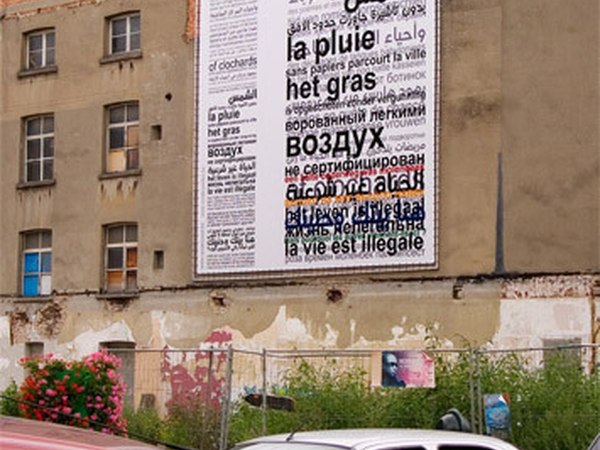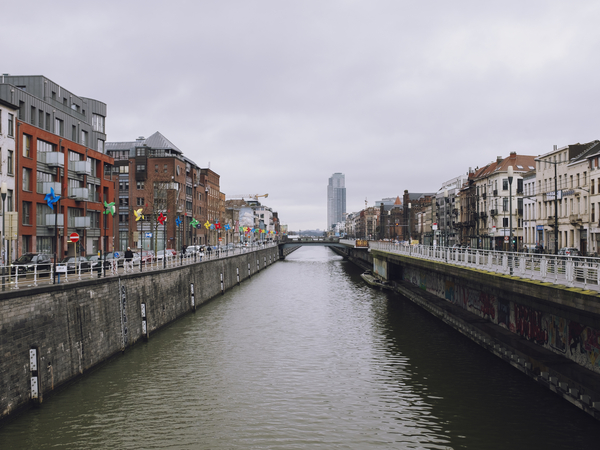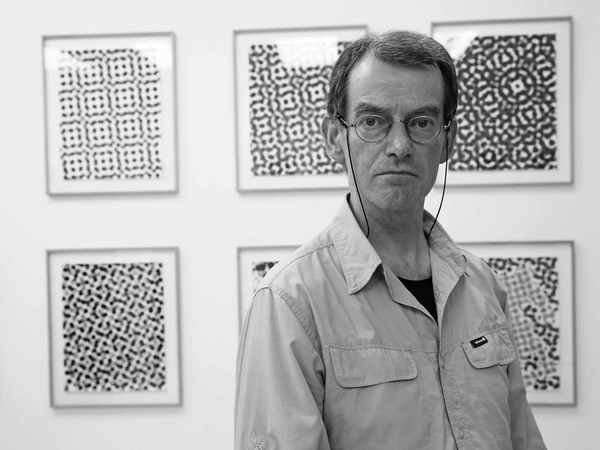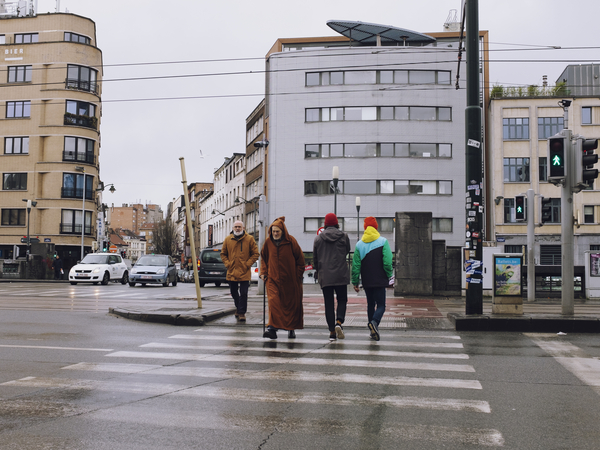MOLENBEEK PALIMPSEST
Running along the Molenbeek canal is a new promenade built in the spring of 2010 and designed by the artist Henri Jacobs. Into the six-hundred-metre-long pavement Jacobs has incorporated several passages from ‘Molenbeek Palimpsest', the poetry cycle the Russian poet Evgeny Bunimovich wrote after visiting this district.
Black and light-grey clinkers form the pixels of words in four languages (Dutch, French, Russian and Arabic) and three alphabets (Latin, Arabic and Cyrillic). The artist and the poet refer to a palimpsest - an ancient sheet of parchment on which there are several layers of text - as a metaphor for the various cultures that live together in Molenbeek, which for many is ‘a stopping place that turned out to be forever' (Bunimovich).

Also, for more than two years, Jacobs huge canvas on which Bunimovitch's verses were included hung in the neighbourhood. Bunimovitch and Jacobs chose the ‘palimpsest', a sheet of parchment from which the text is scraped off so it can be used over and over again, as a metaphor for the complexity of the borough of Molenbeek. Jacobs created a graphic work on a huge canvas on which Bunimovitch's verses were included, layer upon layer, in Russian, Dutch, French and Arabic.
activities

In November 2006 the poet Evgeny Bunimovich visited Molenbeek, where the artist Henri Jacobs lives, and this immediately set the tone for the productive cooperation that was to follow. The first result was a temporary painting called Molenbeek, a palimpsest, in which verses by Bunimovich in several languages were superimposed. At the same time, women and youths from Molenbeek started creative work using poetry and images. Since spring 2010 Jacobs' permanent work has become visible: an impressive promenade along the canal, to the rhythm of Bunimovich's verses.
the artist

Henri Jacobs does drawings, photos, tapestries and paintings in which he explores every possible geometric and organic form. He paints symbolic spaces that provide the setting for life's existential questions, using such objects as tables, chairs, grills, floors, windows and doors that remind us of the Italian Renaissance. His geometric designs also lend themselves very well to incorporation into architectural projects: the interplay of colours and forms gives visitors a radically different sense of space. Jacobs' work has been shown in galleries and museums in Amsterdam, Brussels, London, Madrid and New York.
See also http://www.henrijacobs.be/

" sur la chaussée pavée encore humide
on devine des traces de pas "
more info